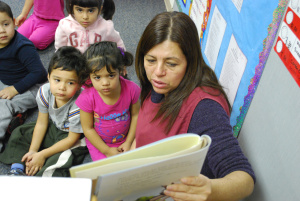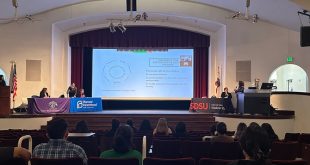
Head Start, the federally funded early childhood education and social service program, is poorly funded, and quality and access is uneven across the states, according to a new sweeping analysis from the National Institute for Early Education Research.
The report finds program quality falls below standard benchmarks, teacher pay in California is one of the lowest nationwide when compared to teachers with similar qualifications in elementary schools, and only a fraction of needy children are actually served.
Statewide, 103,447 pregnant women and children under five receive Head Start services, yet this represents just 8 percent of the state’s total low-income population in this age range.
Based on the state’s population and its large percentage of impoverished families, California receives just over $1 billion to provide these services, an amount far greater than any other state. Yet, said report author Steve Barnett of NIEER, the amount of money distributed to Head Start providers has not changed in decades.
“The allocations were essentially frozen in time across states at 1981 levels,” Barnett said. “So what California gets is based on what California looked like in 1981, not based on what California looks like 35 years later.”
Head Start regulations do not stipulate how much needs to be spent per child, and that amount varies from state to state. California, the report finds, spends less per child than what is spent on average by other states.
In 2014-2015, Early Head Start funding per child in California was $11,222, below the national average of $12,575. For three and four year-olds, funding per child was $8,028, just below the national average of $8,038 when adjusted for cost of living.
“Lower per pupil funding is partly historical and partly because individual programs choose to serve more kids,” Barnett said. “The trade off is they spend less per kid which compromises quality and/or how many hours and days each kid gets.”
California’s programs came in slightly below national quality standards. Programs use a classroom observation tool to evaluate progress. Using those metrics, California’s Head Start centers rated a 2.8 – below the 3.0 level that indicates a quality program.
Barnett said a big part of the problem is the poor pay for teachers. Head Start teachers in California make significantly less per year than public school teachers with the same credentials.
“With a $37,000 salary gap, you have a big problem hiring qualified teachers, retaining qualified teachers,” Barnett said.
The report also finds that the state’s Head Start teachers have fewer qualifications overall. Just 65 percent have a Bachelor’s degree or higher, compared to 73 percent nationwide.
Teachers without a B.A. are paid less, Barnett said. It’s a “chicken and egg” game, he said, because the pay is so low for having a B.A. that there is little incentive for teachers to invest in their own education and then stay teaching Head Start.
On a positive note, the state does fairly well in the area of teacher ethnicity matching that of students – two thirds of both teachers and students are Latino.
The biggest issue, the report finds, is that Head Start needs to reach more children in need. NIEER estimates it would cost additional $20 billion to serve half of all low income three and four year-olds nationwide.
In California, for Head Start to enroll half of all eligible 3- and 4-year-olds, it would cost an additional almost $2.2 billion.





